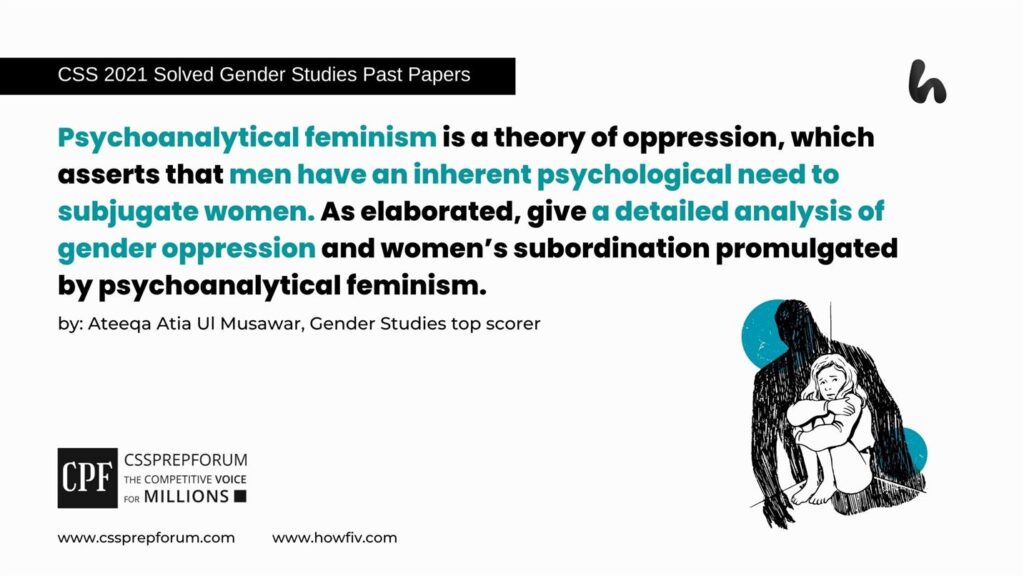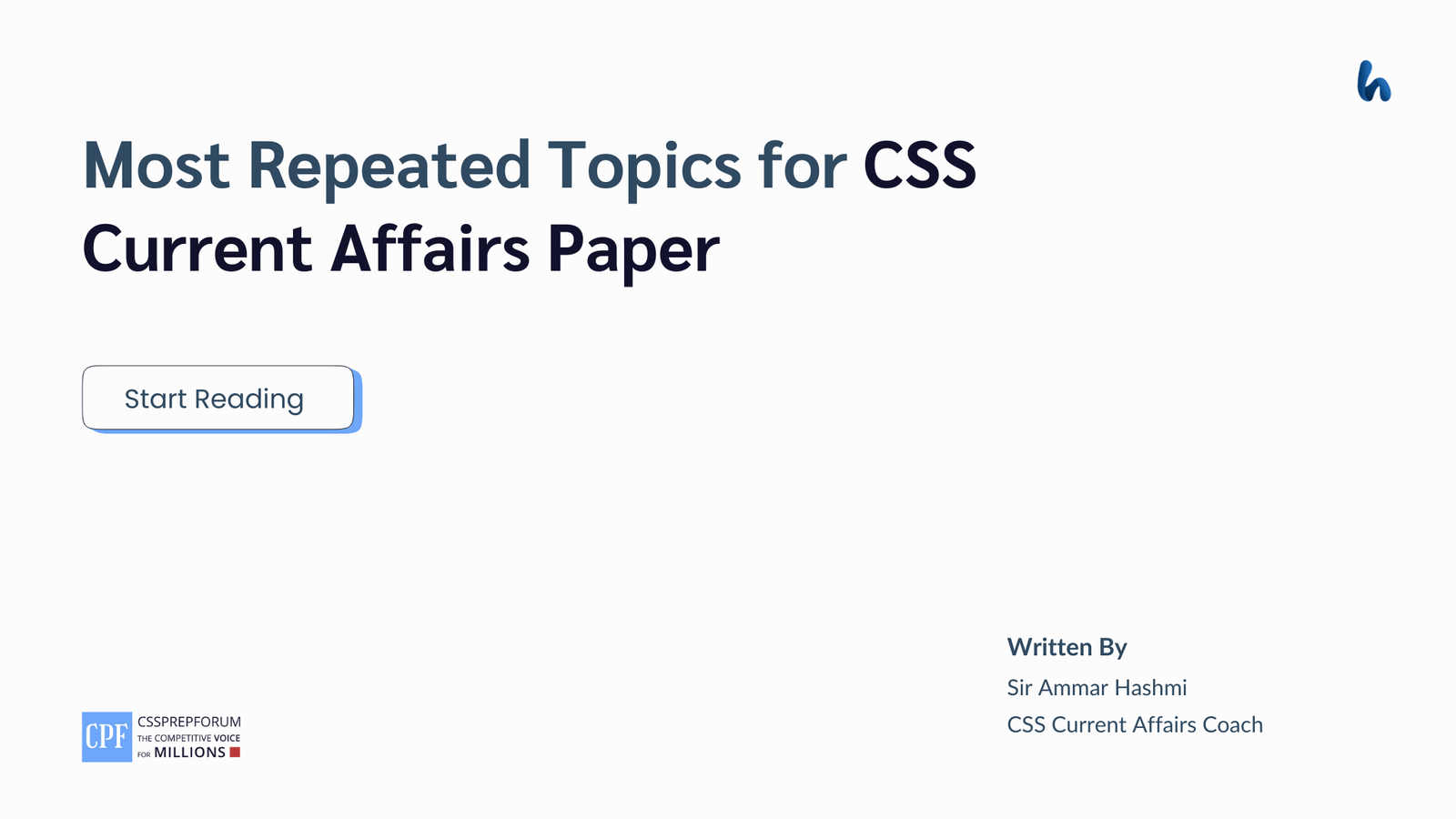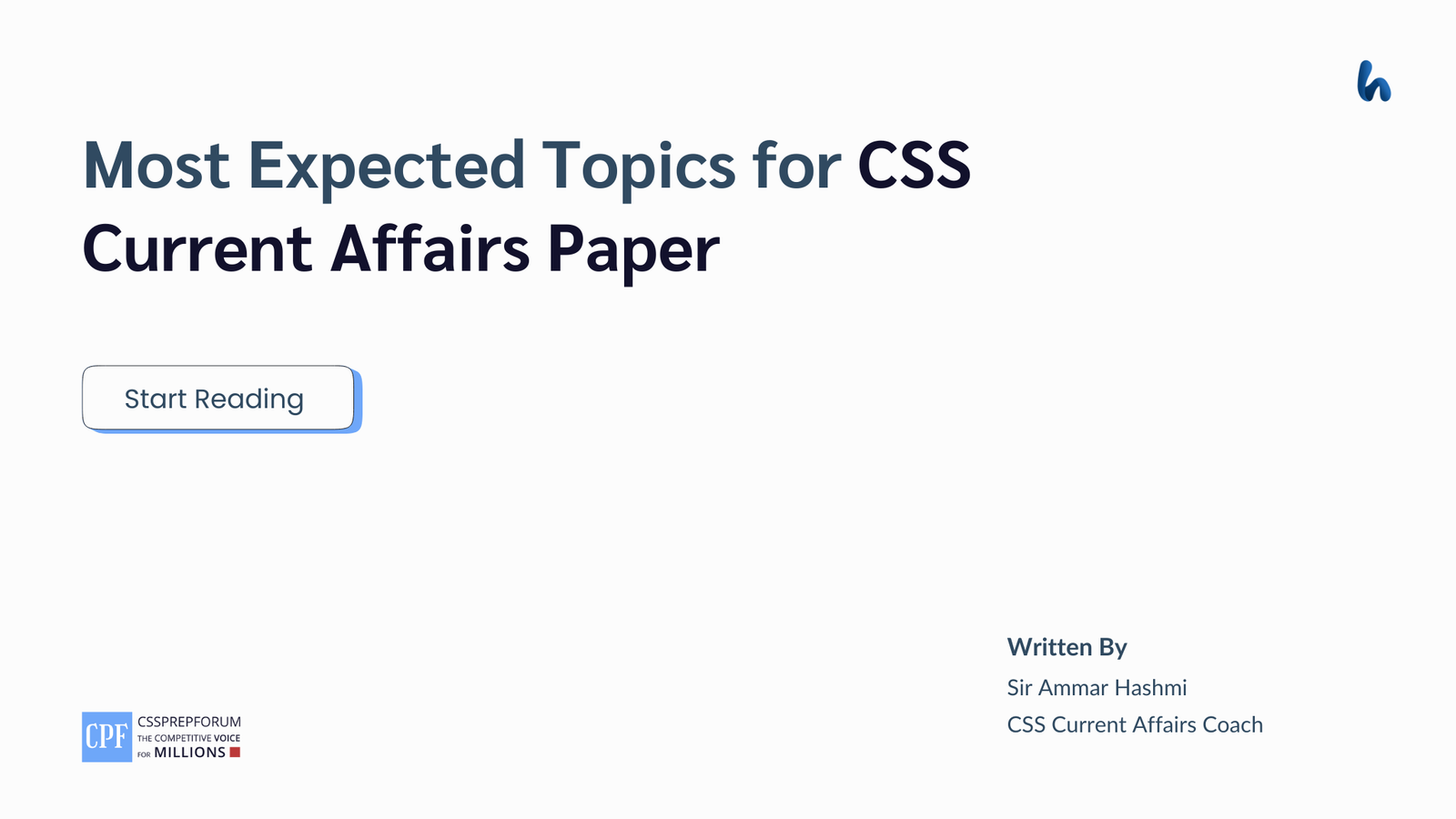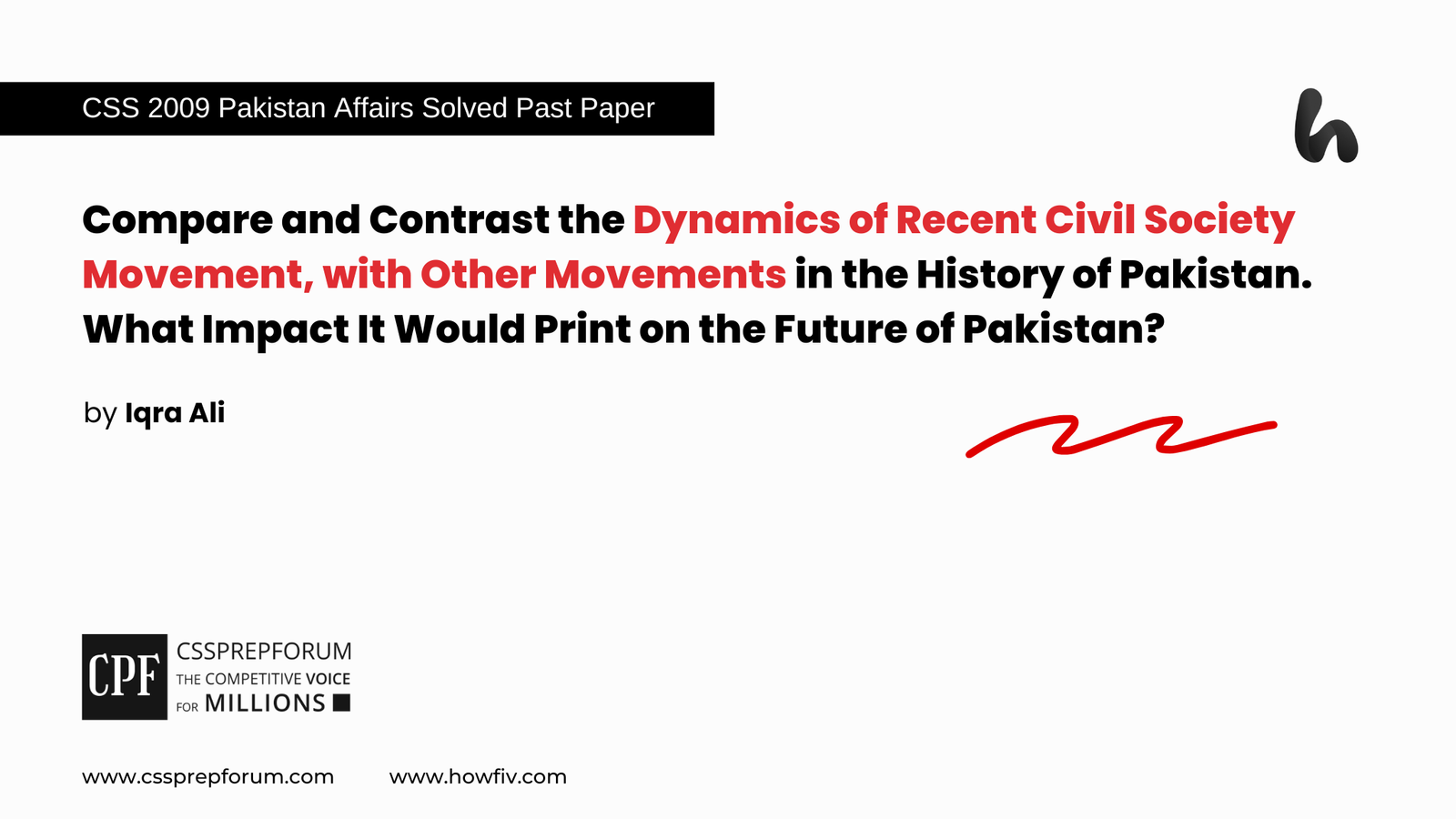CSS Solved Gender Studies Past Papers | Psychoanalytical feminism is a theory of oppression, which asserts that men have an inherent psychological need to subjugate women. As elaborated, give a detailed analysis of gender oppression and women’s subordination promulgated by psychoanalytical feminism.
The following question of Gender Studies is solved by Ateeqa Atia Ul Musawar, the highest scorer in CSS Gender Studies. Moreover, the question is attempted on the same pattern, taught by Sir to his students, scoring the highest marks in compulsory subjects for years. This solved past paper question is uploaded to help aspirants understand how to crack a topic or question, how to write relevantly, what coherence is, and how to include and connect ideas, opinions, and suggestions to score the maximum.

Question Breakdown
This particular article focuses on defining the fundamental idea of how a person’s mind is molded through multiple micro and macro-level variables in order to oppress women. Adding more, a reader of this article would learn how the psychoanalytical feminist’s thoughts were impacted by the Lacan and Freudian theories. Besides this, the reader might benefit from understanding the fundamental idea behind the psychoanalytical perspective more fully by considering the numerous other theories of gender construction. Also, this paper would emphasize the connection between post-modernist and psychoanalytical theories, which together serve to highlight the reality that men have a psychological drive to dominate women.
Outline
1- Introduction
2- Cracking the Central Concept of Psychoanalytical feminism
3- Understanding Psychoanalyst’s Argumentative Stance
4- Discussing the contributory factors at the Micro and Macro level
- ✓ Micro-level Factors
- Childhood learning and formation
- Relationships with parents
- Early sexual traits
- Slogan of masculinity and femininity
- ✓ Macro level Factors
- Examination of masculinity and femininity
- Emergence of adult sexuality
- Continual reinforcement of patriarchy
5- Case in point through adding the theoretical perspectives
- ✓ Gender Role Theory
- ✓ Gender Schema Theory
- ✓ Butler’s gender performativity
6- Foundational Framework of Psychoanalytical Theory
7- Understanding the influence of the Freudian School of thought
- ✓ Stages of Development
- ✓ What are the Electra complex and Oedipus Complex
8- How does theory relate to Postmodernism
9- Notables Advocates and their Works
10- Critique in Point
11- Conclusion

Answer to the question
Introduction
“Being female is not natural. It appears natural only through repeated performances of gender”
– By Judith Butler in Gender Trouble and Undoing Gender
The theory of oppression and personality formation known as psychoanalytical feminism essentially refers to the idea that women’s experiences of being oppressed by males are deeply established in their minds. Psychoanalysts believe that men’s dominance and women’s repression have their roots in the patriarchal influences on men’s psyches. Psychoanalytical feminists bridge the gap between post-modern feminist views and post-structuralist ideas by drawing on the core of Freud’s theory of personality development and self-construction of gender categories from the Lacanian school of thought. Under the hood of structuralism and post-structuralism, the components of language on the one hand construct the theory of personality development. On the other hand, Freud encourages psychoanalytical feminists to identify the fundamental causes of women’s enslavement by elucidating the nature of the id, ego, and superego while taking developmental phases into account. By examining how the mental language, structure, and way of life have evolved, this particular branch of feminism hopes to better understand how women’s oppression is a result. By integrating this pattern of oppression into society, patriarchy is more effectively created and maintained. According to the dubious contours of this hypothesis, it has been revealed that cultural taboos and societal conventions stalk women by controlling the minds of males. Moreover, in addition to gender-specific responsibilities, the various dichotomies and stereotypical labels connected with genders act as catalysts for the worldwide and, notably, Pakistani condition of diminished equality. In light of this, even poststructuralists do not lag behind in exposing the bare fact that gender differences are not a natural but rather a fostered reality.
Cracking the Central Concept of Psychoanalytical feminism
The main idea behind psychoanalytical feminism is that women have been socialized to believe they are inferior to men and therefore be treated as second-class citizens. This school of thought’s well-known feminists, like Nancy Chodrow, Judith Butler, and Jessica Benjamin, support the thesis that gender inequality is only possible because of the unhealthy rearing of children.
Understanding Psychoanalyst’s Argumentative Stance
The feminists of this particular school of thought saw motherhood and parenting as a way to understand how the status quo is constantly produced and reproduced. In addition to describing how gender is created and used on a societal, familial, and personal level, psychoanalytical feminists concentrated on early childhood development. The advocates talked about how the concepts of masculinity and femininity, assigning specific genders to certain duties, a person’s sexual development, early learning and formation, the dominance of patriarchy, etc., all contribute to the idea of gender and gender disparities. These aspects were referred to by these feminists as micro- and macro-level.
Discussing the contributory factors at the Micro and Macro level
The ways and environments in which a child’s mind develops are covered by the micro and macro-level elements. In the end, these are the damaging influences that, in addition to shaping a child’s cultural beliefs, promote the idea of masculinity and femininity.
- ✓ Micro-level Factors
- Childhood learning and formation
- Relationships with parents
- Early sexual traits
- The slogan of masculinity and femininity
- ✓ Macro level Factors
- Examination of masculinity and femininity
- The emergence of adult sexuality
- Continual reinforcement of patriarchy
Case in point through adding the theoretical perspectives
The idea put forth by psychoanalytical feminists is strongly supported by numerous ideas of how gender is socially constructed. These theories aid in our comprehension of how gender development is more of a nurtured than a natural process.
- ✓ Gender Role Theory
This particular idea helps to explain why men and women are assigned various responsibilities in society, and the persistence of this process actually creates gender and, ultimately, gender differences.
“All those things a person says or does to disclose himself or herself as having the status of a boy or a man, a girl or women respectively”
– John Money
- ✓ Gender Schema Theory
Schema can be defined as a pattern of ideas or actions that classifies information and establishes relationships between men and women. The 1960s and 1970s cognitive revolution had an impact on the idea. The fundamental focus of Freudian views was on the anatomy of gender formation and creation. This theory unveils the fact it is the children’s cognitive development combined with the social influences that led to the development of gender schemes Butler’s gender performativity
According to Butler’s theory of gender performativity, social expectations, and gender behavior build gender rather than there being any intrinsic reality to it. Gender is constructed by the repeated conformity of males and females to societal norms, which ultimately leads to gender disparities.
Foundational Framework of Psychoanalytical Theory
The dubious influence of several micro- and macro-level factors helped psychoanalytical feminists develop their position on gender production. But in essence, Sigmund Freud’s views of the human psyche and Lacan’s reworking of Freud’s theory have given rise to the core framework of psychoanalytical feminism. Several psychoanalytical feminists look at pre- and oedipal experiences in relation to gender and identity formation using Freud’s methods. Thus, the Freudian school of thought’s theory needs to be described first.
Understanding the influence of the Freudian School of thought
Psychoanalytical feminists were influenced by Sigmund Freud who was a fervent advocate of the idea of personality formation and a proponent of personality development through components of the id, ego, and superego. Thus, early childhood development is the main emphasis of psychoanalytical feminism. It describes how gender is created and used on a societal, familial, and personal level. According to psychoanalytical feminists, Sigmund Freud believed that a variety of elements, such as cultural characteristics, the concept of masculinity and femininity, infant development, and the predominance of the patriarchal system, affect a child’s personality. Freud outlined five key phases in which a child’s personality develops in order to fully define the idea and reality.
- ✓ Stages of Development
Children’s gender-based ideas are greatly influenced by these developmental phases. Freud believed that a child learns various elements that shape his personality during the first three phases—the oral, anal, and phallic stages. He coined the terms “Oedipus complex” and “Electra complex” to describe the stages in which a youngster develops love and affection for the opposing sex.
| Stages | Ages | Characteristics | The Fixation |
| Oral | Birth-1 | The mouth is primarily the erogenous zone, the pleasure derived from sucking, id is dominant | This can result in problems with drinking, eating, smoking, or nail biting |
| Anal | 1-3 | Toilet training (external reality) interferes with gratification received from defecation | Anal expulsive personality links to a messy wasteful, destructive personality. Anal retentive personality links to orderly, obsessive, and rigid. |
| Phallic | 4-5 | Incestuous fantasies, Oedipus Complex, anxiety, superego development | Freud believed that penis envy was never fully resolved and that all women remain somewhat fixated on this stage |
| Latency | 5-Puberty | Period of sublimation of sex instinct | Extremely sexually unfulfilled |
| Genital | Adolescence- adulthood | Development of sex role identity and adult social relationship | Unsatisfactory, relationship impotence. |
- ✓ What are the Electra complex and Oedipus Complex
The female equivalent of the Oedipus complex is known as the Electra complex. It centers on a girl, between the ages of 3 and 6, who develops an unconscious sexual attachment to her father and is resentful of her mother. The hypothesis was created by Carl Jung in 1913. The term “Oedipus complex” has historically been used to refer to a boy’s feelings of attraction to his mother and competition with his father.
| OEDIPUS COMPLEX | ELECTRA COMPLEX |
| Oedipus Complex is a Freudian concept that describes a child ‘s sexual desire for the parent of the opposite sex and a sense of rivalry with the parent of the same sex. | Electra complex is a non-Freudian concept that describes a girl’s adoration and attraction to their fathers and resentment, hostility, and rivalry towards their mothers. |
| Freud by Sigmund Freud in 1899 | Introduced by Carl Jung as a female counterpart of Oedipus Complex |
| Traditionally, used to describe a boy’s attraction toward the mother and sense of rivalry with the father | Describes a girl’s attraction towards the father and sense of rivalry with her mother |
How does theory relate to Postmodernism?
Children have the capacity to be bisexual during the pre-oedipal stages of their existence, according to many psychoanalytical feminists. They are socialized to be heterosexual through a mix of parenting and the development of boys’ and girls’ masculinity. With time and the separation of children, the sentiments of the Oedipus complex and the Electra complex completely fade. A baby girl must be brought under her mother’s consideration because of societal circumstances. Boys continue to be under their dads’ control since they are impacted by them. Now, Freud’s object-relations theory enters the picture and emphasizes the real difference between masculine and feminine. The same idea underlies why a girl’s close relationship with her mother defines her as feminine. In contrast, a boy’s relationship with his father and distance from his mother defines him as masculine. The children are exposed to sexual and familial separation from birth, and this combination strengthens it. The gender-specific duties are then born from there. Boys and girls, respectively, take on their parents’ roles. In this patriarchal society, the boy in the group assumes dominance while the girl stays within its four boundaries. In addition to this, the definitions of masculinity and femininity have deep roots in patriarchal societies due to the specificity of color, cultural features, and multiple linguistic discourses. The language discourse gave rise to several dichotomies that were connected to particular genders. This is what post-modernism is stressing all about.
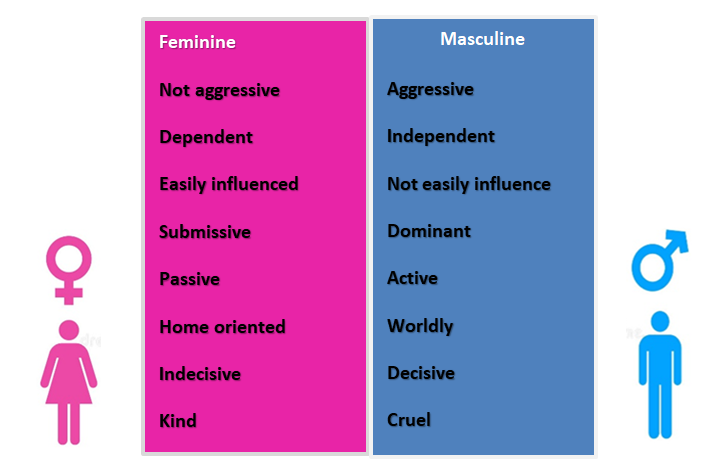
- ✓ Post -Modernism
A subset of third-wave feminism known as postmodern feminism combines French feminism, post-structuralism, and postmodernism. It seeks to overthrow the existing patriarchal binary rules in favor of recognizing variations and personal experiences because it views gender stereotypes as cultural constructs made through language.
- ✓ Concept behind Lacanian theory
Similar to this is the Lacan theory, which emphasizes the notion that a child’s personality is influenced by their language. In order to deconstruct the many variables that contribute to the production of gender and the fundamental ideas of masculinity and femininity, psychoanalytical feminists focused on language construction as one of the main aspects. The development of personality is largely influenced by language, sometimes through symbolic order, other discourses, and finally patriarchal literature that led to the theoretical perspectives of structuralism and poststructuralism.
- ✓ Concept behind structuralism and post-structuralism
The structuralist movement views culture as being composed of complementary systems that are defined in contrast to one another and frequently placed in a hierarchy. Men and women and intellectual and emotional are two examples. The post-structuralist approach to the world opposes dualism and contends that history and culture play a significant role in defining each topic.
otables Advocates and their Works
- ✓ Nancy Chodrow, “The Reproduction of Mothering.”
- ✓ Helen Cixous’ “The Laugh of the Medusa.”
- ✓ Elizabeth Grosz, “The Volatile Bodies.”
- ✓ Jacqueline Rose, “Feminine Sexuality.”
- ✓ Judith Butler, “Gender Trouble.”
- ✓ Luce Irigagary, “The Sex Which is Not One.”
Critique in Point
- Concentrated particularly upon the first stages of development
- The theories that provide the foundation for most of this kind of feminism rely upon Freud and Lacan. Many of these theories are misogynistic and place men in the position of superiority over women
- Psychological theory interpreted the feminine experience largely in relation to the masculine, which is one of the critiques of science and technology offered by psychoanalytical feminism.
Conclusion
In the history of gender studies, psychoanalytical feminism is one of the theories that prompted discussion on how gender is constructed and the conflicting views of femininity and masculinity. It casts doubt on the patriarchal society’s rigidly prescribed gender roles and restrictions for women. Both poststructuralists and postmodern feminists contributed equally to this movement’s goal of exposing the true nature of the oppression of women. Psychoanalyst feminists reworked the concepts after drawing on Lacanian and Freudian ideas to explain their position. Freud’s theories on personality development and the construction of identity were major sources of inspiration. Because of this, prominent supporters underlined the fact that men have innate psychological training under the influence of Freudian philosophy.
CSS Solved Past Papers’ Essays
Looking for the last ten years of CSS and PMS Solved Essays and want to know how Sir Kazim’s students write and score the highest marks in the essays’ papers? Then, click on the CSS Solved Essays to start reading them.
CSS Solved Essays

CSS Solved General Science & Ability Past Papers
Want to read the last ten years’ General Science & Ability Solved Past Papers to learn how to attempt them and to score high? Let’s click on the link below to read them all freely. All past papers have been solved by Miss Iqra Ali & Dr Nishat Baloch, Pakistan’s top CSS GSA coach having the highest score of their students.
General Science & Ability Solved Past Papers
CSS Solved Pakistan Affairs Past Papers
Want to read CSS Pakistan Affairs Solved Past Papers and learn how to attempt them to score high? Let’s click on the link below to read them all freely. All past papers’ questions have been attempted by Sir Kazim’s students, who scored the highest in the subject.
CSS Solved Pakistan Affairs
CSS Solved International Relations’ Past Papers
Have you opted for International Relations in the CSS examination and want to score above 150? Then, click on the CSS Solved International Relations’ Past Papers by Miss Abeera Fatima, the top IR scorer and the best IR coach in Pakistan.
CSS Solved International Relations Past Papers
Articles Might Interest You!
The following are some of the most important articles for CSS and PMS aspirants. Click on any to start reading.

